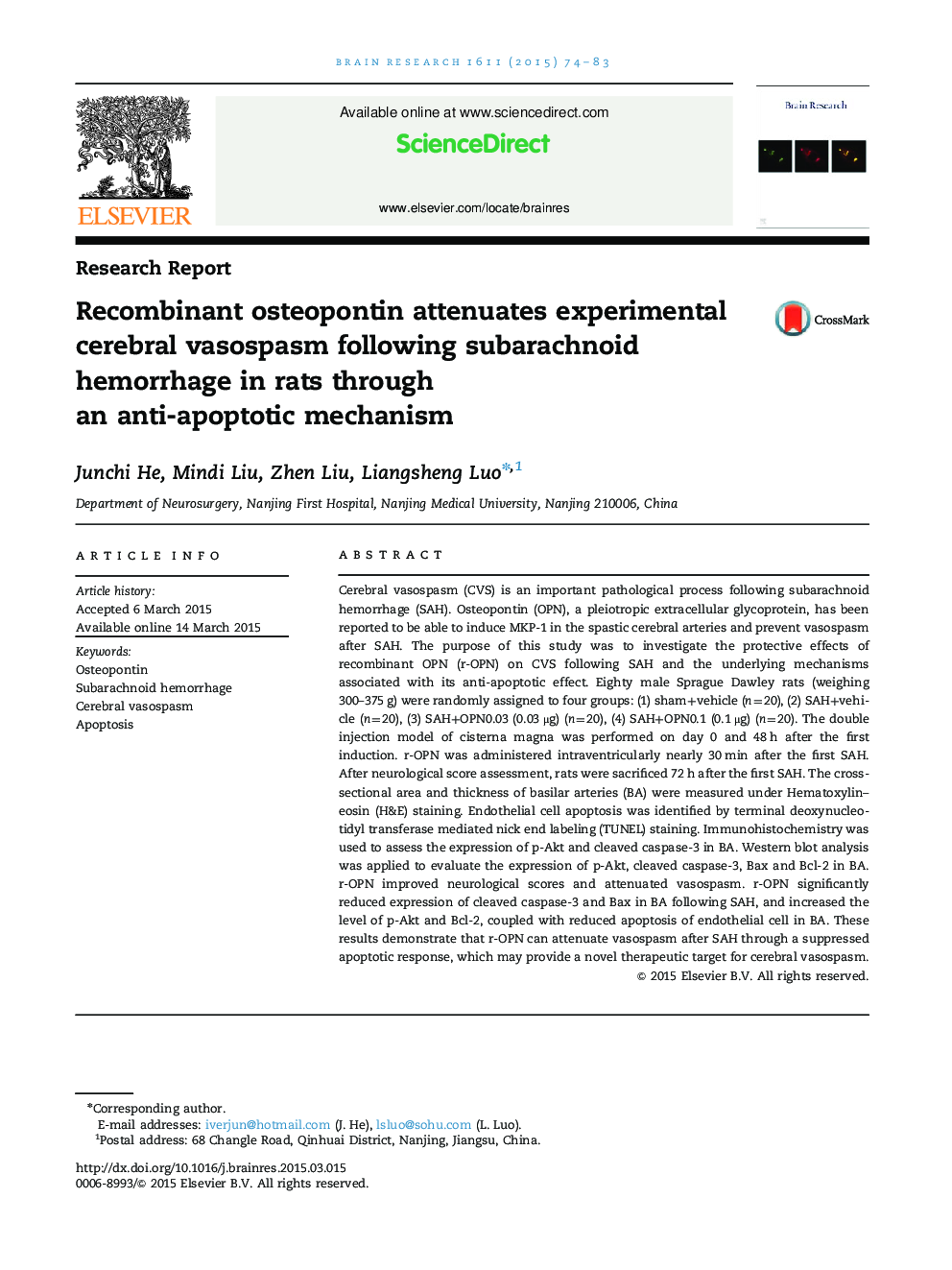| Article ID | Journal | Published Year | Pages | File Type |
|---|---|---|---|---|
| 6263040 | Brain Research | 2015 | 10 Pages |
â¢Cerebral vasospasm after subarachnoid hemorrhage can be attenuated by r-OPN administration.â¢The alleviation is associated with an anti-apoptotic effect to endothelia cells.â¢The Akt signaling pathway may involve in the mechanism.
Cerebral vasospasm (CVS) is an important pathological process following subarachnoid hemorrhage (SAH). Osteopontin (OPN), a pleiotropic extracellular glycoprotein, has been reported to be able to induce MKP-1 in the spastic cerebral arteries and prevent vasospasm after SAH. The purpose of this study was to investigate the protective effects of recombinant OPN (r-OPN) on CVS following SAH and the underlying mechanisms associated with its anti-apoptotic effect. Eighty male Sprague Dawley rats (weighing 300-375 g) were randomly assigned to four groups: (1) sham+vehicle (n=20), (2) SAH+vehicle (n=20), (3) SAH+OPN0.03 (0.03 μg) (n=20), (4) SAH+OPN0.1 (0.1 μg) (n=20). The double injection model of cisterna magna was performed on day 0 and 48 h after the first induction. r-OPN was administered intraventricularly nearly 30 min after the first SAH. After neurological score assessment, rats were sacrificed 72 h after the first SAH. The cross-sectional area and thickness of basilar arteries (BA) were measured under Hematoxylin-eosin (H&E) staining. Endothelial cell apoptosis was identified by terminal deoxynucleotidyl transferase mediated nick end labeling (TUNEL) staining. Immunohistochemistry was used to assess the expression of p-Akt and cleaved caspase-3 in BA. Western blot analysis was applied to evaluate the expression of p-Akt, cleaved caspase-3, Bax and Bcl-2 in BA. r-OPN improved neurological scores and attenuated vasospasm. r-OPN significantly reduced expression of cleaved caspase-3 and Bax in BA following SAH, and increased the level of p-Akt and Bcl-2, coupled with reduced apoptosis of endothelial cell in BA. These results demonstrate that r-OPN can attenuate vasospasm after SAH through a suppressed apoptotic response, which may provide a novel therapeutic target for cerebral vasospasm.
